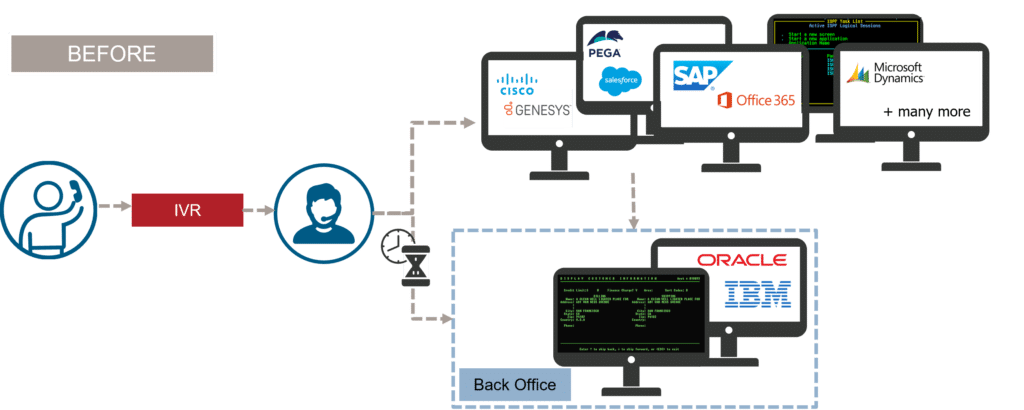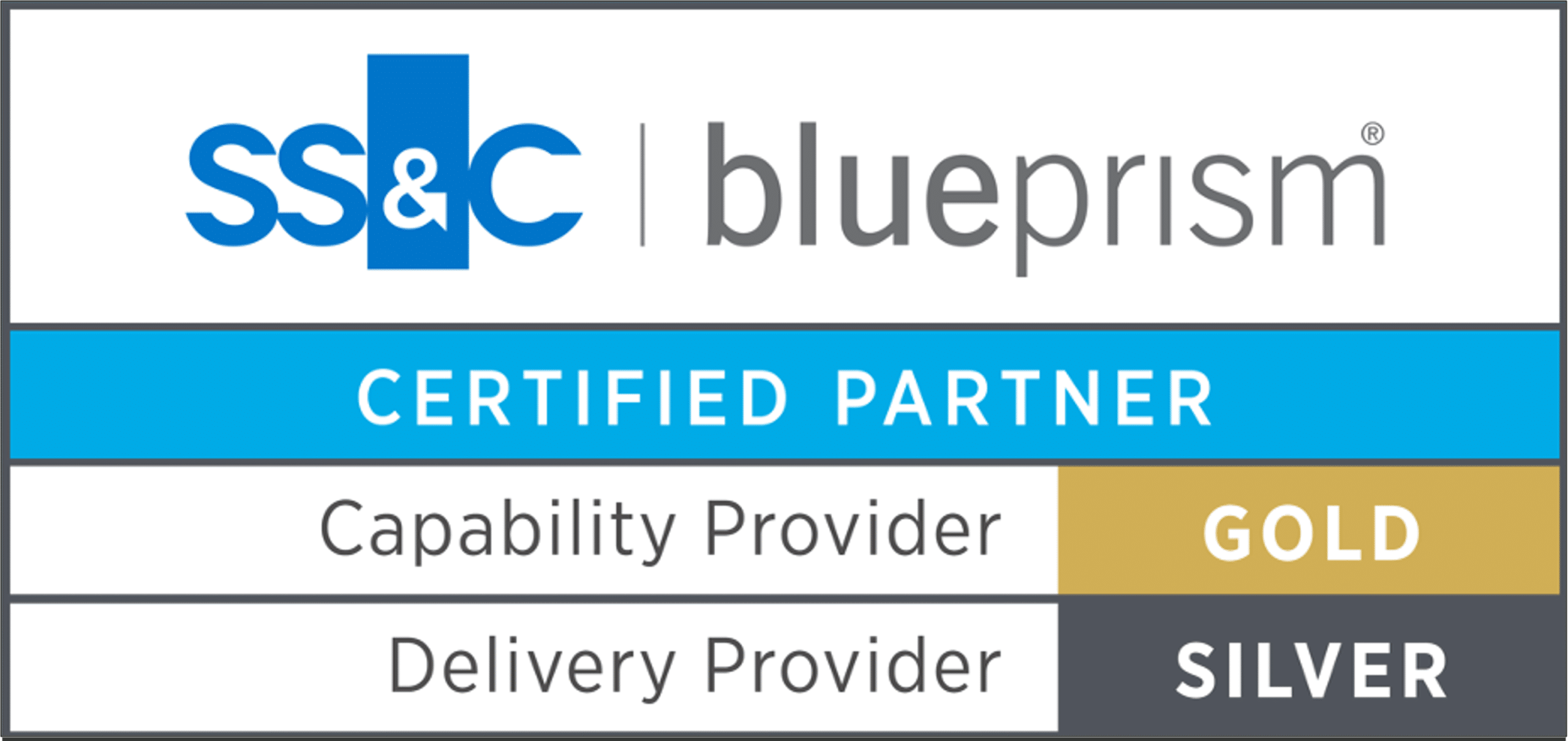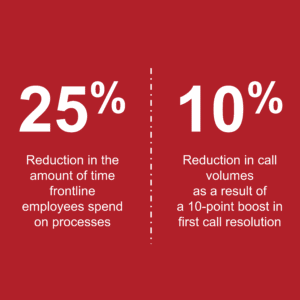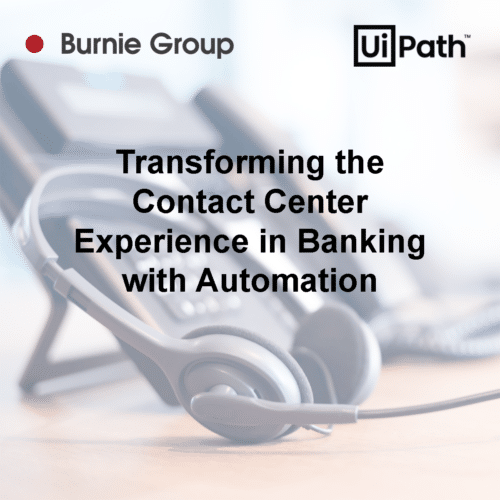Burnie Group’s contact automation program enables the contact center to be a strategic asset that drives channel migration and strengthens customer relationships. Our contact center program combines the power of automation to identify customer needs and deliver a select human touch. We believe the contact center of the future will meet customers’ needs and wants, provide efficient guidance, and be present for the customer in emotional and differentiated moments of truth in the customer lifecycle.

Why contact center automation?
Even with the rising popularity of chat, text and email, the telephone is still by far the highest-rated channel preference for communicating with a brand. Our research indicates that 70% – 95% of customers identified telephone interaction as their preferred communication channel.
Furthermore, 64% of consumers and 80% of business buyers expect a real-time response to their inquiries.
Against this backdrop, the reality for most contact centers is that frontline employees (FLEs) don’t have the knowledge they need to respond to customer inquiries quickly and often spend more time looking for answers than connecting with the customer.
The current state of contact centers: “Please hold. Your call is important to us.”
Too often, a customer receives less than ideal customer service from a contact center. For example, customers contact the contact center for information — to request or cancel service, make a billing inquiry or register a complaint — and the minutes start to tick by. The call may be held in a queue awaiting the next available frontline employee. When the call is eventually answered, the FLE needs a frustrating array of identification information and, upon learning more about the query, may need to forward the call to another FLE to process the request. Worst of all, this time and effort can still result in the original reason for the call not being adequately resolved.
There can be a lack of clear communication — perhaps from poor frontline employee training. Or, some excellent FLEs are unable to resolve a customer query the first time because they have insufficient information on their screens. Many customers complain of inconsistent follow-up or no follow-up at all, and inappropriate product or service proposals that fail to fit their needs.
If these problems are annoying for customers, they can be devastating for the companies involved. Contact centers are often a company’s primary interface with its customers. Long calls aren’t just costly in financial terms — they also impact the business in terms of reputation, brand and quality. Frustrated customers walk away and find an alternative provider, perhaps even airing their grievances on social media.
When we consider that the work of a frontline employee requires strong communication and persuasion skills, patience, empathy, the ability to work under pressure and recommend innovative solutions, the ability of FLEs to succeed is hampered by mundane obstacles such as:
- High call volumes
- Lack of knowledge and data about the customer
- Stressful work environments (e.g. too many screens to navigate, rising customer frustration)
- Inability to fully address customer’s purpose for calling
In fact, 75% of frontline employees’ time is spent doing manual research, and only 25% is spent on “valuable customer interaction.” (source: IBM)
How contact center attended automation technologies solve these issues
Contact center attended automation utilizes software robots that reside on a frontline employee’s desktops and are designed to work collaboratively with frontline employees in real-time. These desktop robots can automate certain tasks on behalf of the frontline employee, freeing them up and increasing their capacity to take on more complex, higher-value work.
Contact Center Automation – Transforming Contact Center Operations



How contact centre automation works
- New contact center automation technologies connect your workflows as well as data flows across your existing tools and applications (modern and legacy)
- They come with pre-built integrations for other contact center technologies such as chatbots, IVR, CRM and AI
- They offer unique contact center capabilities, such as a customizable employee console
- Provide high-quality Citrix and Virtual Desktop Infrastructure automation that reduce maintenance costs

Why contact center attended automation is revolutionary
Contact center attended automation preserves and extends your investment in your existing contact center technologies. Attended automation solves the issues that frontline employees struggle with today that hamper their ability to provide personalized and timely customer service. Furthermore, contact center automation technologies allow for short implementation timelines (8 – 12 weeks is typical).
Typically, in Burnie Group client projects, the analysis phase can routinely identify 30% to 70% of customer interactions that can be readily automated using attended automation.
Calculate the value you can realize through contact center automation.
TRY OUR CALCULATORBenefits of contact center automation
- Personalization: Accelerated data access and workflows deliver an immediate 360° view of the customer and where they are in their journey.
- Omnichannel: Automated transactions across full-service and self-service channels harmonize interactions across all channels.
- Next Best Action: Real and near-time feeds push relevant frontline employee prompts specific to the current conversation for consistent and aligned recommendations.
- On-Screen Navigation: Eliminates deficiencies of legacy platforms and multiple data sources that have created a proliferation of user interfaces for FLEs.
- Back-Office Navigation: Front to back-office automation drives enterprise efficiencies and reducing delays and backlogs.
- Customer Experience: Automation simplifies interactions with faster handling times, intuitive self-serve and personalized, efficient service.
- Frontline Employee Onboarding: Significant reduction in FLE training allows emphasis on soft-skills training critical to good customer engagement.
- Attrition: Automation empowers employees with fewer mundane tasks, leading to higher rates of employee satisfaction and reduced attrition.
- Compliance: Robotics to deliver 100% accuracy, reducing error rate and delivering real-time validation and compliance.
- Upsell and Cross-Sell: Accelerated data feeds enable upselling and cross-selling by promoting offers and customer-relevant product opportunities.
Contact center automation radically changes customer interaction

- Reduce operating expenses (OpEx) by 30% – 40% within the first year
- Reduce call duration by 50% +
- Reduce frontline employee attrition by ~30%
- Provide efficient, empathetic, relevant and engaging service to customers
The results above are typical and proven, thanks to innovative advances in intelligent contact center automation technologies.
Why choose Burnie Group for contact center automation
Burnie Group combines deep contact center operations expertise with our award-winning automation capabilities to transform your contact center operations. We are the first professional services firm in North America to deliver contact center automation at some of Canada’s largest contact centers. We are leaders in back-office automation, and the longest-standing North America services partner of leading automation technology firms.
Our contact center automation certifications
Our insights on contact center automation
Read about how contact center automation can improve your organization.
Want to learn more about contact center automation? We will be happy to show you the potential ahead.
SCHEDULE A CONSULTATION






